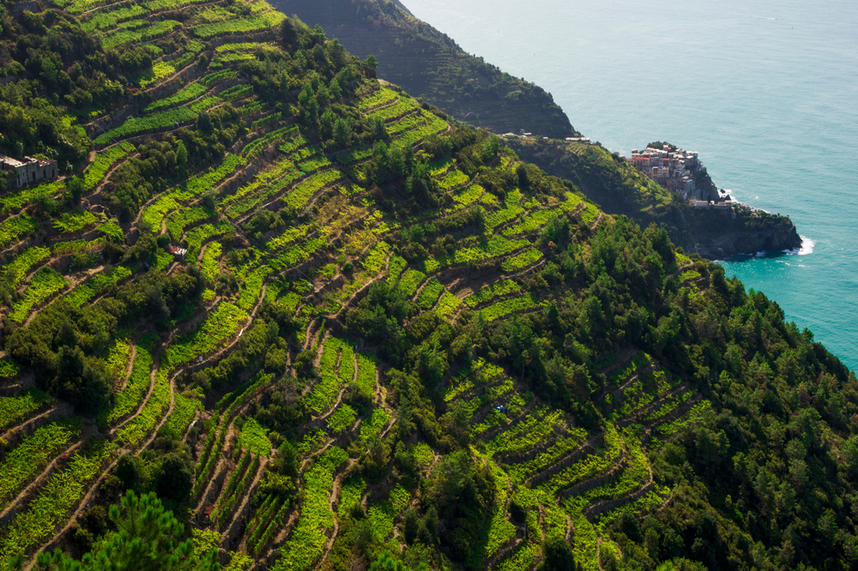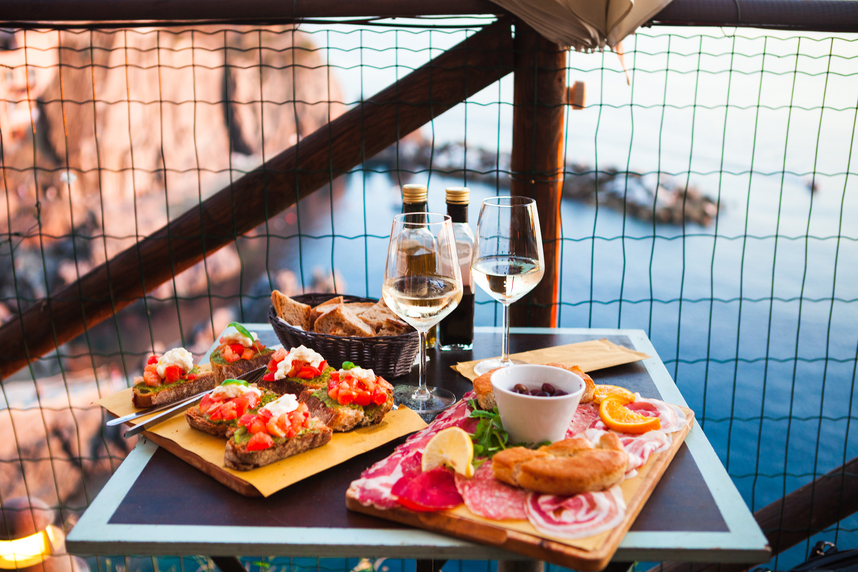Can a long, narrow strip of land squeezed between the sea and the mountains be a fertile - if austere - territory for growing vines? Apparently so. Exiguous from a territorial point of view, but notable for its landscapes and tourist offerings, Liguria boasts centuries of commercial dominance and today delights gourmets with wines worthy of mention, albeit less renowned or celebrated than those of the main wine regions.
Here is everything you need to know about the wines of Liguria, including complex terroirs and gastronomic pairings.
History of Ligurian wines, between rise, decline and recovery
With less than 6,000 km2 of surface area, Liguria is among the smallest regions in Italy, as remarkable in terms of tourism as it is shy when it comes to wine production, although it is experiencing a remarkable recovery. This difficulty in emerging in a rather varied and valuable wine panorama is due to a troubled production history, made up of centuries of prestige, but also of obstacles and setbacks.
The Greeks were the first to come up against the ruggedness of this land in order to extract vines from it. They imported vine shoots and passed on the rudiments of vine cultivation to the Ligurian populations settled here.
These techniques were later perfected by the Romans, thanks to whom the wines produced took on a quality that merited a mention by Pliny the Elder.
The medieval period was fundamental for the rise of viticulture in Liguria, thanks to the commercial initiatives of the Republic of Genoa (1099-1797), which gave a considerable boost to production, but above all allowed local wines to spread throughout much of the Mediterranean basin, thanks to flourishing trade.
A rise that seemed unstoppable, but which was drastically curbed by a small insect, responsible for bringing much of European viticulture to its knees in the 19th century: phylloxera.
While in the rest of the continent the wine world largely managed to recover after the scourge, in Liguria wine growers encountered great difficulties. Even in this region, however, signs of a strenuous recovery were not lacking: after a period of activity limited to family production, Ligurian oenology is shining again, offering excellent products, sons of a land that is certainly not easy, but rich in history, pride and determination.
The grape varieties, production areas and terroir of Ligurian wines

From the very beginning of its winemaking history, Liguria has presented itself to growers as a land rich in possibilities, but at the same time refractory and severe, forcing them into what can be defined to all intents and purposes as heroic viticulture.
The terraces where most of the vines grow have been conquered over time by shaping a complex territory made up of rocky reliefs, valleys punctuated by rivers and small spaces between the coast and the mountains. However, this has not prevented the vines from producing excellent wines, thanks to the influence of the sea and the protection of the Apennine ridge, which shields the rows from the aggressive winds.
Generally speaking - with differences between one wine-growing area and another - the climate can be said to be Mediterranean, with hot but dry summers and not too harsh winters, all characterised by good ventilation.
As far as soils are concerned, they vary depending on their location. Mainly characterised by alluvial deposits, the soils on which the main Ligurian vines grow are composed of rock, with a good presence of marble and granite.
The terroir and production areas of Ligurian wine can be subdivided into 3 main macro-areas, where mainly white grape varieties are cultivated and where the 8 Denominazione di Origine in Liguria (DOC) are located.
- Colli di Luni: an area extending from the province of La Spezia to that of Massa Carrara (thus trespassing into Tuscany). The territory is mainly characterised by gentle hills and plains facing the sea. The Colli di Luni DOC is produced here and Vermentino is mainly cultivated, but also Albarola and Sangiovese, from which fragrant and savoury, not too acidic wines are
- Cinque Terre: central area facing the Ligurian Sea. Viticulture here is anything but simple, due to the terraces clinging to the steep slopes. The most cultivated vines are Bosco, Albarola and Vermentino. An excellent wine produced here is the Sciacchetrà, a rare and prized passito.
- Valpolcevera: corresponds to the territories in the province of Genoa and takes its name from the Polcevera river. The DOC of the same name is produced here, made from Vermentino, Albarola, Bianchetta Genovese, Ciliegiolo, Sangiovese and Dolcetto. The wines produced here are medium acidic and fruity, savoury on the palate and characterised by a good aromatic charge.
- Tigullio: an area in the province of Genoa, with a preponderance of white vines, including Vermentino, Dolcetto and Bianchetta Genovese. Here, the characteristics of the wines of Liguria are expressed through warm tones and good structure.
- Riviera di Ponente: comprises a large strip of land in the western part of the region, characterised by low to medium-elevation hills between the Alps and the sea. Unlike the other production areas, red grape varieties, such as Alicante and Rossese, dominate here, producing wines with good acidity and intense, yet harmonious aromatics, with a slightly bitter finish. Whites include the ubiquitous Vermentino, Pigato and Moscato Bianco.
Main Ligurian red and white wines and how to pair them
Dominating local wine production, Liguria's most famous white wines are represented by the prince of the region's grape varieties: Vermentino. Plants of this variety are cultivated in most of the wine-growing areas of Liguria, with slight variations due to terroir.
A Vermentino Colli di Luni DOC 'Etichetta Nera' 2022, conquers the taster with a distinct organoleptic personality, expressing at sensory level all the charm of the region. The golden reflections attract the eye, but it is the aromas of aromatic herbs and flowers that conquer the senses, in an aromatic balance confirmed on the palate. This product goes perfectly with fish dishes, thanks to a good savouriness and spicy aftertaste, but also gives great satisfaction when paired with a full-bodied board of local cheeses.
If you prefer white meat to fish, the appropriate wine is a 'Geva' Pigato DOC Riviera Ligure di Ponente. Characterised by a straw-yellow colour with light golden reflections, this product arrives intense on the nose, with enveloping fruity notes and bewitching hints of aromatic herbs, including thyme and rosemary. Its smoothness on the palate is enlivened by hints of almond, which can be appreciated both with a totally vegetarian menu and with chicken or rabbit recipes.
Ligurian red wines also deserve a mention, although less predominant. To bring to the table a concentrate of taste and aromas, one can bet on a Rossese DOC Riviera Ligure di Ponente, whose organoleptic characteristics will please all lovers of one of the most famous ingredients of local gastronomy.
The combination of pesto and Ligurian wines is here expressed to its full potential, thanks to this pleasant, drinkable wine with hints of small fruits and floral, vinous suggestions. With a dish of trofie or trenette al pesto this product is truly exceptional!
Among the best gastronomic pairings with Ligurian wines, there is obviously no shortage of proposals for the end of the meal. One might mention the rare and beloved Sciacchetrà, a passito wine with amber tones and voluptuous hints of sultanas and dried fruit. Its pronounced sweetness, but not too cloying, goes well with traditional Ligurian desserts (a slice of pandolce, for example), but also in tasting with blue cheeses.
Now that you know the history and characteristics of Ligurian wines, what are you waiting for? Choose your bottle on Svinando!

